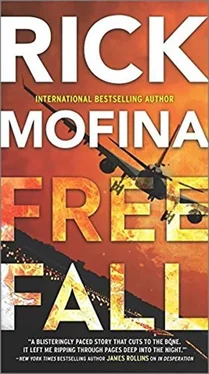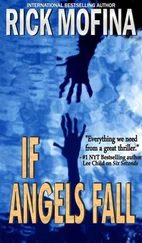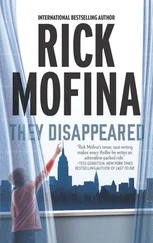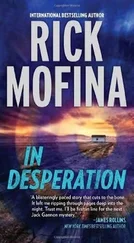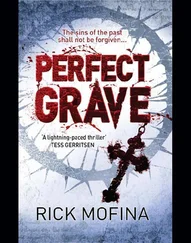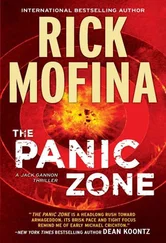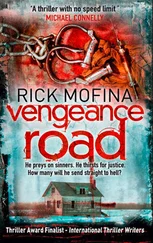“Fine. You can fly out alone, but once you land you’ll go everywhere you need to go with a photographer from our Los Angeles bureau. I’ll advise our LA folks to line someone up for you. They won’t like it. Bureau people are touchy about national staff working in their yard. Just so we’re clear, my terms are nonnegotiable. And you’ll check in with me at every step.”
He looked at her for a long, serious moment.
“Is that understood, Kate?”
“It is.”
“Good.” He nodded to Grace and Vanessa. “You have two good reasons to be careful.”
* * *
Chuck was right, Kate thought, while watching Grace’s reflection in the subway window during the ride home to Morningside Heights.
She was sleeping on Kate’s shoulder. Kate put her arm around her.
Vanessa smiled at them and took a picture.
Later that day, she took two more calls from “Malcolm Grady.” Only after assurances that she hadn’t informed any law enforcement or federal security agency about Project Overlord did he provide an address and a time for Kate to meet him.
The next morning Kate called Newslead’s travel office, and they got her a direct flight that afternoon out of JFK.
Her flight was with American Airlines, the aircraft an Airbus A321-a great airline and a great plane. Nothing to do with Richlon-Titan. Kate had no fear of flying. Because of her job she’d flown many times, and it was about as stressful to her as crossing the street.
As the engines whined and the jet raced down the runway and lifted off, forcing her deep into her seat, a bad feeling began to steal over her.
Images of the terror inside the EastCloud flight and the fiery Heathrow crash blazed in her mind. Her jet climbed and she fought the fear mounting in her heart until she choked it off.
At last, the plane leveled.
Kate took a deep breath, letting it out slowly while searching the clouds and wondering what awaited her in California.
Washington, DC
The faces of the dead haunted Jake Hooper as he and Pax rounded the corner at the east end of the pool at the National Mall.
It had been two days since he’d returned from London.
During his time there the Daily Mail had run a front-page gallery of photos of the Heathrow crash victims, six children and nine adults, inlayed over the wreckage.
The images were seared into Hooper’s memory and weighed heavily on him as he tried to resume his routine. His early-morning runs with Pax at the Mall helped him organize his thoughts about his work and his life.
The night before, at their anniversary dinner, he’d given his wife, Gwen, the pearl necklace and earrings he’d bought in London. She’d given him a watch he’d liked and good news.
The vet says they’re going to put Pax on an experimental drug therapy. It’ll give him three to four more pain-free years. Isn’t that great?
It was more than that.
Now, as Hooper finished his run, Pax’s spirits seemed lifted. He panted happily as Hooper bent down and nuzzled him.
“Now we have hope, buddy. Now we have hope.”
That was not the case with Hooper’s work on the Shikra and EastCloud flights. The investigations were progressing slowly, though that was expected because they were always meticulous and exhaustive.
They had to be.
But recent developments had deepened Hooper’s concerns about a possible cause.
When he got to his desk in NTSB headquarters at L’Enfant Plaza, he took out his copy of the Daily Mail and spread it across his desk. He stared into the faces of those who’d been killed and vowed to find the answers their families deserved.
Shikra, British, American and Kuwaiti investigators had examined a range of potential causes. Was it an irregularity in the computers controlling the engine systems? Was it an electronic malfunction? They’d studied weather systems and the possibility of a bird strike and they’d looked at radio interference.
All were ruled out.
But there were still hundreds of other aspects of the aircraft that they needed to study, and the investigation continued with plans for Hooper and other members of the team to return to the UK at the end of the month.
As for EastCloud Flight 4990, Hooper reviewed the latest examination of the fault logs of the Electrical Load Management System. So far their review had gone back thirty flights. No anomalies had emerged. They would go back another thirty flights. And they were still studying the quick access recorder. Meanwhile weather systems had found no indication of turbulence, nothing on radar. Bill Cashill and Irene Zimm were still pointing to human performance and crew behavior as the likely cause behind the trouble of the Buffalo-to-New York flight.
Hooper disagreed.
He believed the source of the cause in both incidents would be found in Richlon-Titan’s fly-by-wire system, which was present in both planes. Underscoring his view was the increasingly disturbing aspect with the emails, the so-called Zarathustra messages, claiming responsibility.
The FBI had advised the NTSB that it was investigating and working on tracking the sender, which included the public appeal for help identifying the person behind them. Yes, investigators received crackpot claims of all sorts with high-profile incidents, Hooper thought, but they were rarely published. But the recent news story on Zarathustra and the FBI’s approach took matters to a troubling level.
When Hooper went to the kitchen for a fresh coffee, investigators Jayden Kennett and Vernon Nall were having a heated discussion.
“What’s up, fellas?” Hooper asked.
“Did you see Cal Marshall and Stuart Shore on CTNB last week?” Kennett asked.
“Yeah, I caught it online after it aired.”
“We think Shore came close to identifying the technology with Project Overlord,” Kennett said.
“Could be,” Hooper said. “I don’t know a lot about Overlord. I was never part of it. It was a long time ago and classified. You guys ever touch it?”
“No, I didn’t have the clearance. It was beyond us,” Kennett said.
“But you’re thinking it’s something we need to look into?” Hooper asked.
“I think so,” Nall said. “Last night I went to the game with Cal Marshall.”
“You know Marshall?”
“Our wives are cousins,” Nall said. “Anyway, he told me he’s hearing rumors on the grapevine about Overlord. Something’s buzzing about it.”
The lunchroom door closed behind Bill Cashill, who’d been standing in the doorway.
“Overlord was abandoned. It never happened,” Cashill said. “So let’s just kill any cockamamie ideas about it having any bearing on EastCloud and Shikra.”
“Were you on the project, Bill?” Nall asked.
“No. It was a very select group back then, people from the military, industry, systems, FAA. There were two NTSB people on it-Elwood King, who died a few years ago of cancer, and John Carmody, who fell off a cliff last summer while hiking in New Zealand.”
“Hang on, hang on.” Hooper snapped his fingers at a memory. “I think a guy I worked with a few times from the industry had mentioned once that he’d worked on Overlord.”
“Who was that?” Cashill asked.
“Robert Cole.”
“Robert Cole? The guy who became a drunk and lost his marbles? The guy who calls us on every investigation with his wild-ass theories?”
“You know he worked with Richlon-Titan on their fly-by-wire system.”
“So?” Cashill’s face tightened. “Where’re you headed here, Jacob?”
“I just don’t think, given the current context, the FBI, the emails, that we can categorically rule out a cyber breach of the system in both planes.”
Читать дальше
Конец ознакомительного отрывка
Купить книгу
